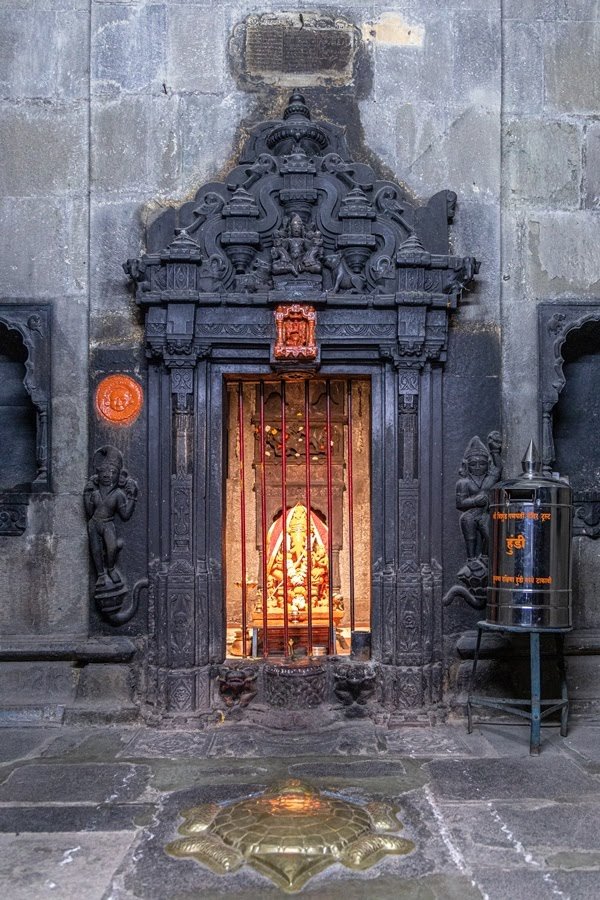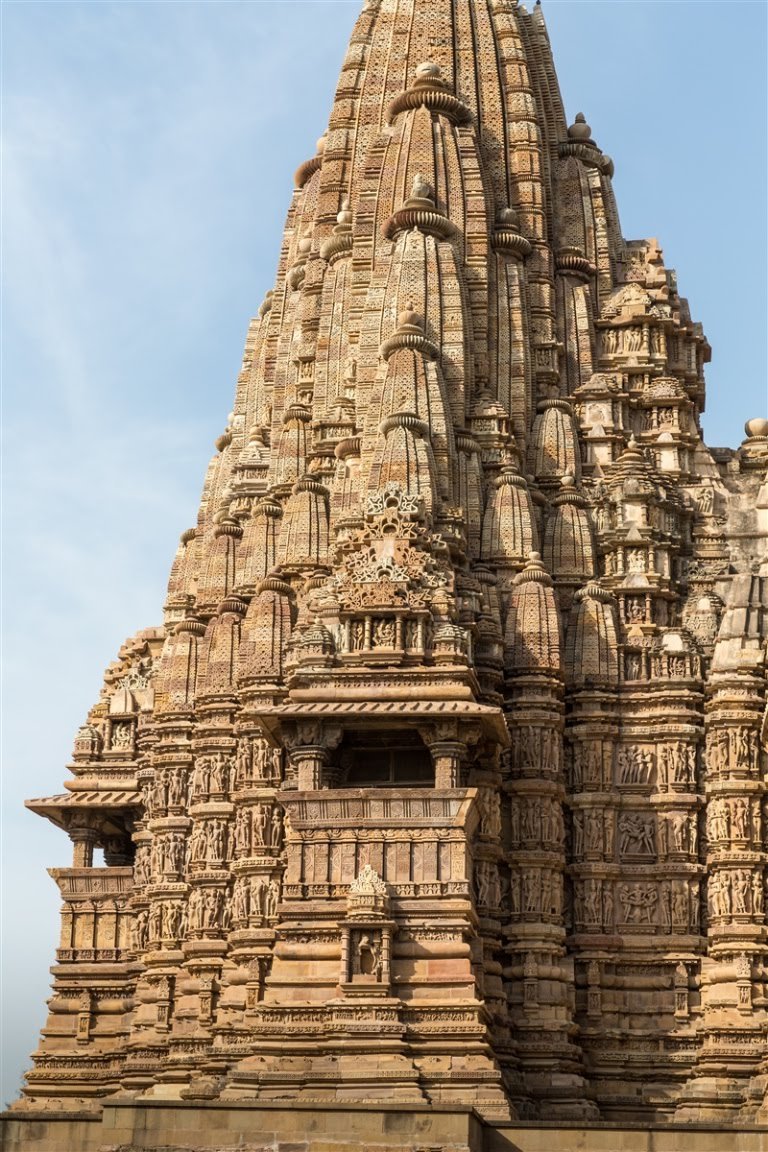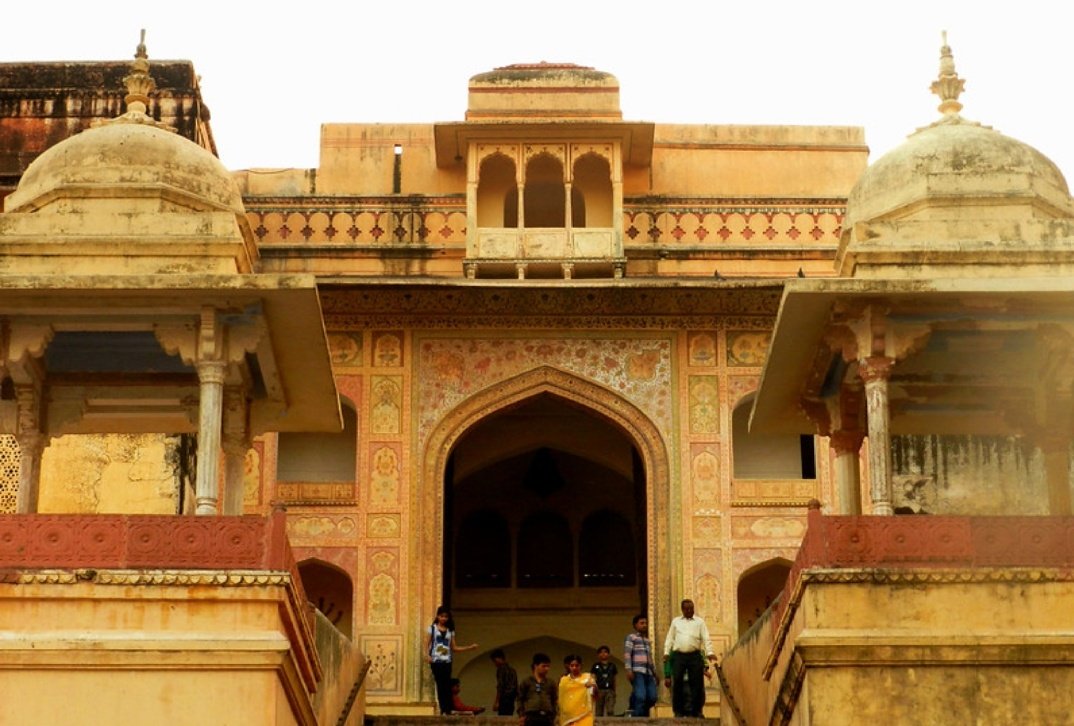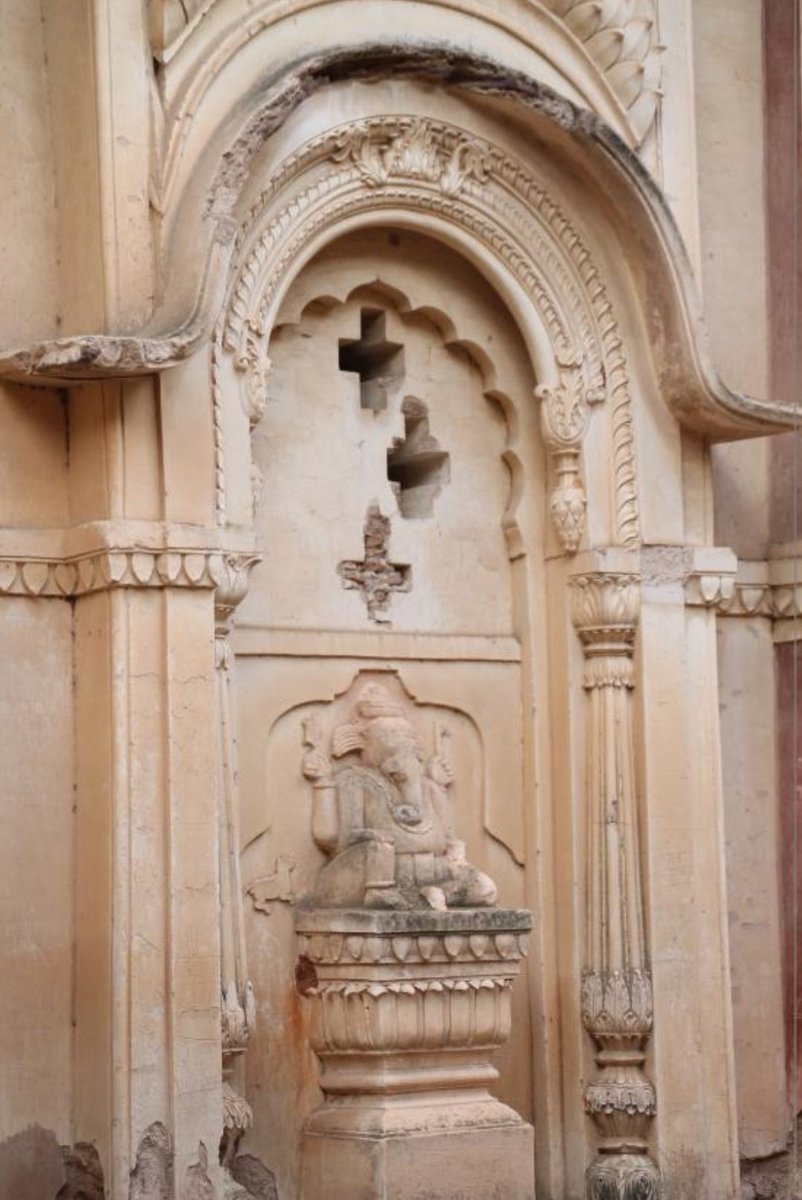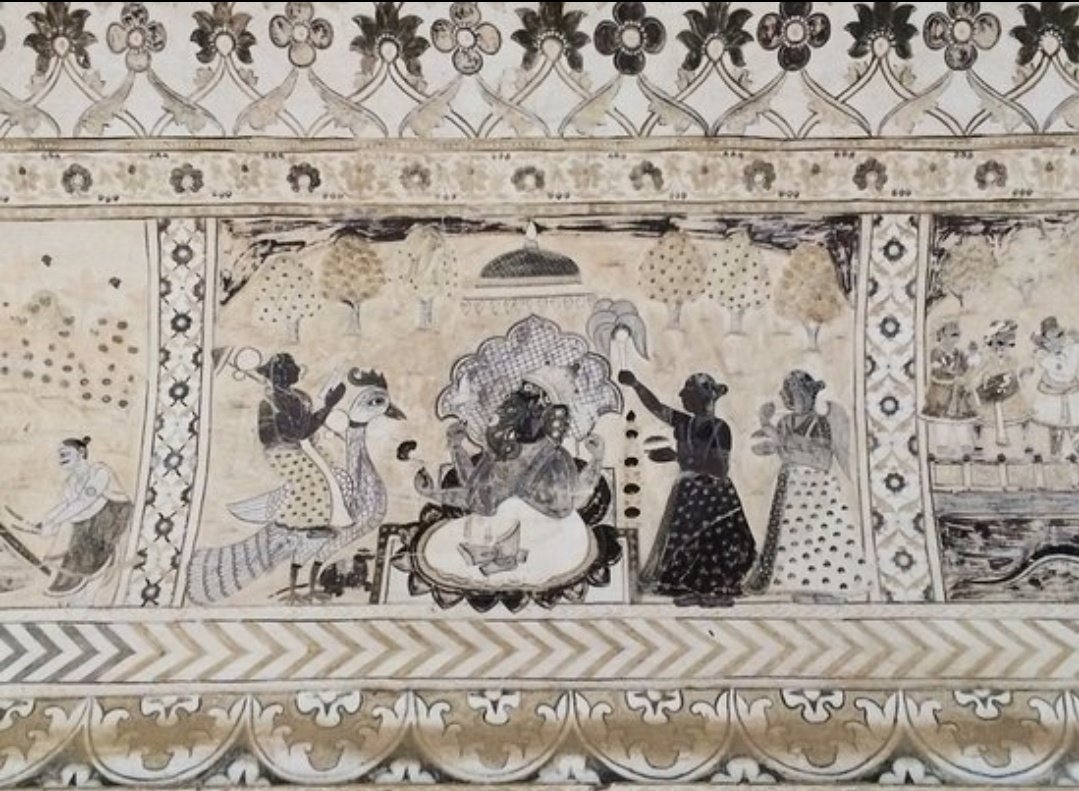#ElloraCaves is a UNESCO World Heritage Site located in Aurangabad, Maharashtra, India. It is one of the largest rock-cut monastery-temple cave complexes in the world, featuring Hindu, Buddhist & Jain
monuments & artwork, dating from 600–1000 CE.
1/1
#HistoryEncyclopedia
monuments & artwork, dating from 600–1000 CE.
1/1
#HistoryEncyclopedia

Cave 16, in particular, features largest single monolithic rock excavation in the world, #KailashaTemple, a chariot shaped monument dedicated to God Shiva. Its excavation also features sculptures depicting gods, goddesses associated with Vaishnavism & Shaktism.
2/2
#ElloraCaves
2/2
#ElloraCaves
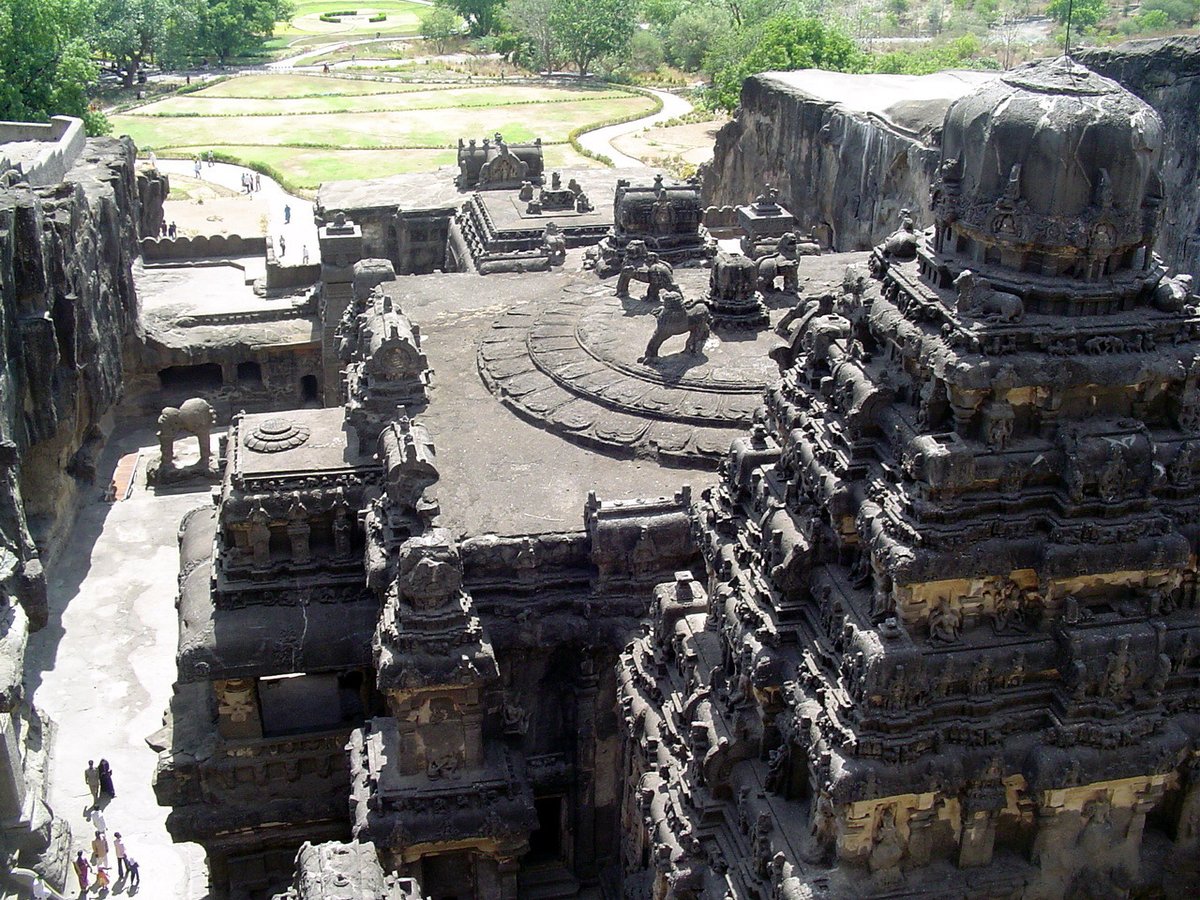
There are over 100 caves at the site, all excavated from the basalt cliffs in the Charanandri Hills, 34 of which are open to public. These consist of 12 Buddhist (caves 1–12), 17 Hindu (caves 13–29) and 5 Jain (caves 30–34) caves.
3/3
#HistoryEncyclopedia #ElloraCaves
3/3
#HistoryEncyclopedia #ElloraCaves
Ellora, also called Verul or Elura, is the short form of the ancient name Elapura. The Ellora caves are about 100 kilometres west of the Ajanta Caves.
4/4
#HistoryEncyclopedia #ElloraCaves #HeritageOfIndia
4/4
#HistoryEncyclopedia #ElloraCaves #HeritageOfIndia
These caves are located on southern side & were built either b/w 630–700 CE or 600–730 CE. The earliest Buddhist cave is Cave 6
📷1: Caves 11 (below) & 12 are 3-storey monasteries cut out of rock, with Vajrayana iconography inside.
📷2:Plan of Cave No. 5 (Mahawara Cave)
5/5

📷1: Caves 11 (below) & 12 are 3-storey monasteries cut out of rock, with Vajrayana iconography inside.
📷2:Plan of Cave No. 5 (Mahawara Cave)
5/5


Caves 11 and 12 are three-storied Mahayana monastery caves with idols, mandalas carved into the walls, and numerous goddesses, and Bodhisattva-related iconography, belonging to Vajrayana Buddhism.
📷Numerous tantric Buddhist goddesses are carved in Cave 12.
6/6
#ElloraCaves
📷Numerous tantric Buddhist goddesses are carved in Cave 12.
6/6
#ElloraCaves

Cave 10, a chaitya worship hall called the 'Vishvakarma cave', built around 650 CE. It is also known as the "Carpenter's Cave", because the rock has been given a finish that has the appearance of wooden beams.
7/7
#HistoryEncyclopedia #ElloraCaves #IncredibleIndia
7/7
#HistoryEncyclopedia #ElloraCaves #IncredibleIndia

At the heart of Vishwakarma cave is a 15-foot statue of Buddha seated in a preaching pose. A large Bodhi tree is carved at his back. The hall has a vaulted roof in which ribs have been carved in the rock imitating the wooden ones.
8/8
#HistoryEncyclopedia #ElloraCaves
8/8
#HistoryEncyclopedia #ElloraCaves

HinduCaves were constructed during Kalachuris period, from mid-6th century to end of 8th century.
Later caves, 14, 15 and 16, were constructed during Rashtrakuta period, some being dated to b/w 8th to 10th centuries.
📷1+2: Devi Parvati and Shiva (right) in an ElloraCaves
9/9

Later caves, 14, 15 and 16, were constructed during Rashtrakuta period, some being dated to b/w 8th to 10th centuries.
📷1+2: Devi Parvati and Shiva (right) in an ElloraCaves
9/9
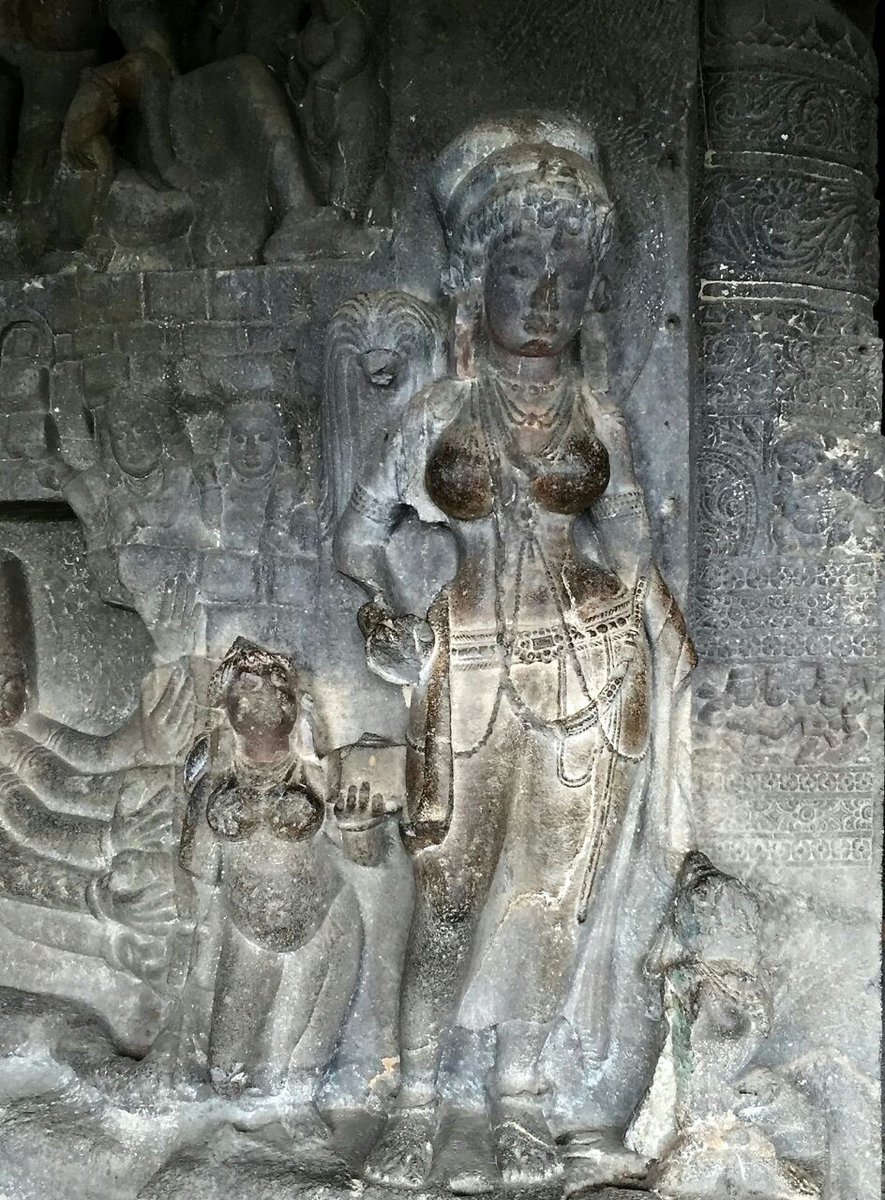

Cave 29, also called Dhumar Lena, is one of earliest excavations in Ellora and among the largest. Early Hindu temple building in cave centred around the "Vale Ganga", a natural waterfall that was integrated into the monument~FACEBOOK
10/10
#ElloraCaves #HistoryOfEncyclopedia
10/10
#ElloraCaves #HistoryOfEncyclopedia

Cave 21, also called Rameshwar Lena. The entrance to Cave 21 is flanked by large sculptures of the goddesses Ganga and Yamuna representing the two major Himalayan rivers and their significance to the Indian culture.
📷1: Devi Ganga.
11/11
#ElloraCaves #HistoryEncyclopedia
📷1: Devi Ganga.
11/11
#ElloraCaves #HistoryEncyclopedia

Cave 16 is also k/s #KailasanathaTemple, remarkably carved out of one single rock was built by Rashtrakuta king Krishna I.
It is inspired by Mount Kailasha & is dedicated to God Shiva. The basement level of the temple features numerous Shaiva, Vaishnava and Shakti works.
12/12
It is inspired by Mount Kailasha & is dedicated to God Shiva. The basement level of the temple features numerous Shaiva, Vaishnava and Shakti works.
12/12

Structure is a freestanding, multi-level temple complex covering an area twice the size of Parthenon in Athens. It is estimated that the artists removed 3 million cubic feet of stone, weighing approximately 200,000 tonnes to excavate the #KailasanathaTemple.
13/13
#ElloraCaves


13/13
#ElloraCaves



Dashavatara temple or Cave 15.
Hindu temple housed in Cave 15 has an open court with a free-standing monolithic mandapa at the middle & a two-storeyed excavated temple at rear. Large sculptural panels between wall columns on upper floor illustrate a wide range of themes.
14/14
Hindu temple housed in Cave 15 has an open court with a free-standing monolithic mandapa at the middle & a two-storeyed excavated temple at rear. Large sculptural panels between wall columns on upper floor illustrate a wide range of themes.
14/14

God Vishnu at the Dashavatara Temple/Cave 15.
15/15
#HistoryEncyclopedia #ElloraCaves #History #IncredibleIndia
15/15
#HistoryEncyclopedia #ElloraCaves #History #IncredibleIndia

At north end of #ElloraCaves are 5 Jain caves (30-34) belonging to Digambara sect, which were excavated in 9th & early 10th centuries. These caves are smaller than Buddhist & Hindu caves but nonetheless feature highly detailed carvings.
📷1: God Mahavira
📷2: God Bahubali
16/16

📷1: God Mahavira
📷2: God Bahubali
16/16


Chotta Kailasha or little Kailasha(Cave 30) was likely built in the early 9th century. It features two larger-than-life size reliefs of dancing Indra, one with eight arms and another with twelve, both adorned with ornaments and a crown.
17/17
#HistoryEncyclopedia #ElloraCaves
17/17
#HistoryEncyclopedia #ElloraCaves

Cave 31, consisting of four pillars, a small shrine a number of carvings, was not completed. The figure of yaksha Matanga on an elephant is on the left side of shrine while one of yakshi Siddhaiki~FB
📷God Mahavira with yaksha Matanga and yakshi Siddhaiki.
18/18
#ElloraCaves
📷God Mahavira with yaksha Matanga and yakshi Siddhaiki.
18/18
#ElloraCaves
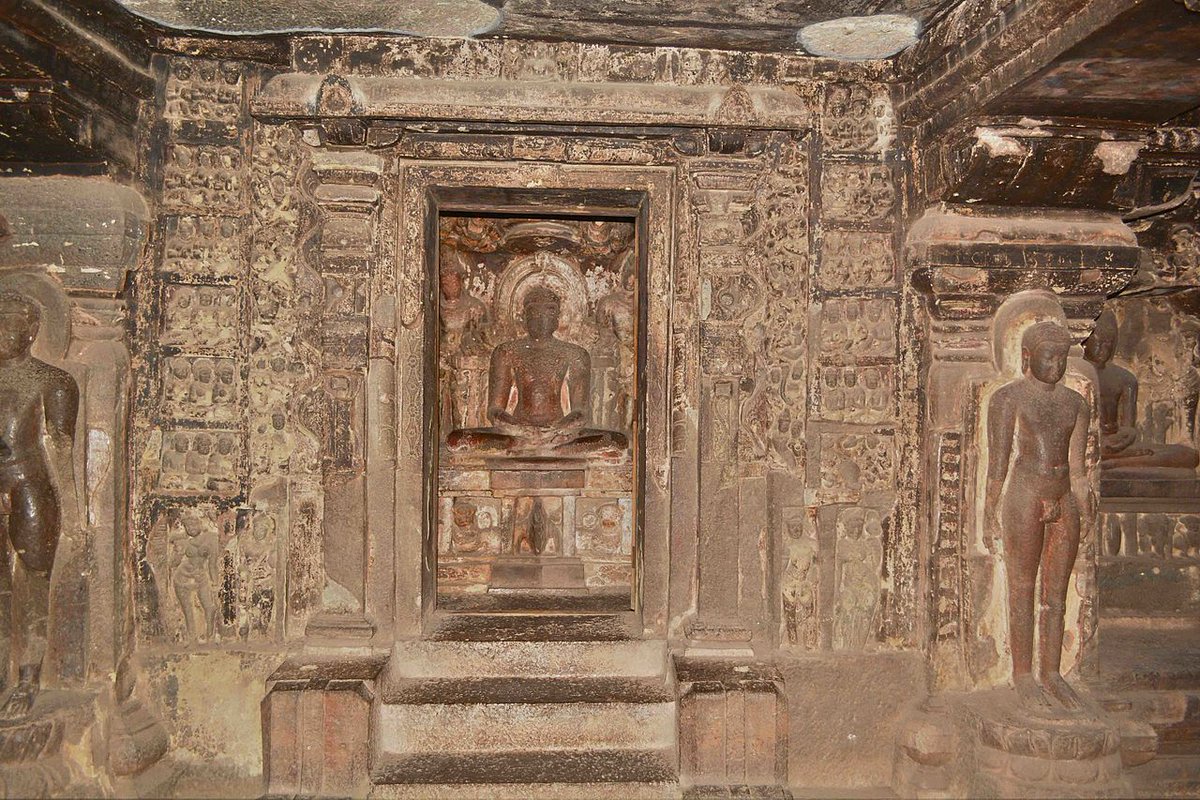
The Indra Sabha (Cave 32), excavated in the 9th century, is a two-storey cave with a monolithic shrine in its court.
19/19
#HistoryEncyclopedia #ElloraCaves #History #IncredibleIndia
📷1: Shikhar of Indra Sabha
19/19
#HistoryEncyclopedia #ElloraCaves #History #IncredibleIndia
📷1: Shikhar of Indra Sabha

Indra is of particular importance in Jainism as not only is he one of 64 deities who reign over heavens, he is, specifically, king of 1st Jain heaven, Saudharmakalpa & chief architect of the celestial assembly hall according to the Adipurana, a Jain holy text. {Cave 32}
20/20
20/20

The Jagannatha Sabha (Cave 33) is the second-largest Jain cave at Ellora and dates to the 9th century according to inscriptions on the pillars. It is a two-storeyed cave with twelve massive pillars and elephant heads projecting~FB
📷Carvings on pillar of Jagannatha Sabha
21/21
📷Carvings on pillar of Jagannatha Sabha
21/21

Cave 34 features a large seated Parshvanatha Jina with 4 camara attendants, two of whom hold fly-whisks and seemingly emerge from the back of the Jina's throne. A large pair of yaksa-yaksi is also found in this cave near the Jina~FACEBOOK
22/22
#HistoryEncyclopedia #ElloraCaves
22/22
#HistoryEncyclopedia #ElloraCaves
📷Goddess Ambika sitting on a lion, Cave 34.
23/23
#HistoryEncyclopedia #ElloraCaves #History #Twitter
23/23
#HistoryEncyclopedia #ElloraCaves #History #Twitter

📷Typical damage to idols centres around face, nose, breasts & limbs. Desecrated statues in Hindu Cave (left) & a Buddhist Cave.
Desecration of idols & images was traced to 15th to 17th centuries when this region was subjected to iconoclasm by Muslim armies.
24/24
#ElloraCaves

Desecration of idols & images was traced to 15th to 17th centuries when this region was subjected to iconoclasm by Muslim armies.
24/24
#ElloraCaves


📷1: God Brahma at Kailasha temple of Ellora, with painted decorations.
📷2: Celing carvings at #ElloraCaves were at one time profusely painted. The rock was covered with lime plaster which was painted. The plaster & the paint has survived in places.
25/25
#HistoryEncyclopedia

📷2: Celing carvings at #ElloraCaves were at one time profusely painted. The rock was covered with lime plaster which was painted. The plaster & the paint has survived in places.
25/25
#HistoryEncyclopedia


• • •
Missing some Tweet in this thread? You can try to
force a refresh



